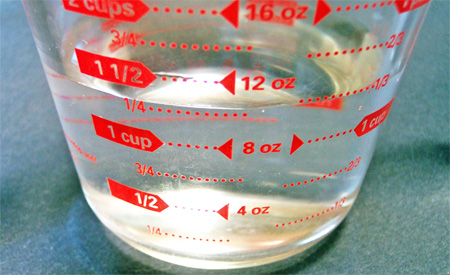|
 |
|
 |
|
Learn
to Eat Healthy is not a traditional diet book with strict rules
and limitations. Here you will find great tips and ideas for healthy
cooking and good guidelines to control your health, your eating habits
and your weight without strict dieting rules. You'll discover that
preparing your own food is fun and easy and your healthy diet is
delicious. In fact, the main reason why most of those quick fix diets
will fail you from the start is because they ignore the way normal
people want to live. This book is simply an easy to read and follow
guidebook with over hundred, easy to prepare, healthy, and tasty
recipes
with full nutritional information, and step by step instructions. More... |
|

Measures & Measuring
|
One of the most important principles to be
observed in
the preparation of food for cooking, is accuracy in measuring. Many of
excellent recipes are failure simply from lack of care in this
respect.
Measures are generally more convenient than weights, and are
more commonly used. The common kitchen cup, which holds a half pint or
250 ml, is
the one usually taken as the standard; if any other size is used, the
ingredients for the entire recipe should be measured by the same. |

|
Measurements
|
-
All measurements for all materials
called for in the recipes in this book are level.
-
The standard measuring cup holds
one-half pint and is divided into fourths and thirds.
-
To make level measurements fill
cup or spoon and scrape off excess with back of knife.
-
One-half spoon is measured lengthwise
of spoon.
-
Sift flour before measuring.
|
|
| NOTE: Where shortening
is mentioned in the recipes it is understood that butter or lard, or an
equivalent quantity of butter substitute or vegetable oil may be used. |
|
Abbrevations of Measures
|
In order to simplify directions
and recipes in books relating to cooking and food preparation, it is customary to use the abbreviations
of some weights and measures. Those which occur most frequently in cookbooks are the following:
|
tsp.
for teaspoon
|
|
pt.
for pint
|
|
Tb.
for tablespoon
|
|
qt.
for quart
|
|
c.
for cup
|
|
oz.
for ounce
|
|
lb.
for pound
|

|
|
The
following points should be observed in measuring:
1. The teaspoons and tablespoons to be used in measuring, are the regular
spoons in general use.
2. Any material like flour, sugar, salt, that has been packed, should
either be sifted or stirred up lightly before measuring.
3. A cup of dry material is measured level with the top of the cup,
without being packed down.
4. A cup of liquid is all the cup will contain without running over.
Hold the cup in a saucer while measuring, to prevent spilling the liquid
upon the floor or table.
|
|
|
|
|
 |
|



